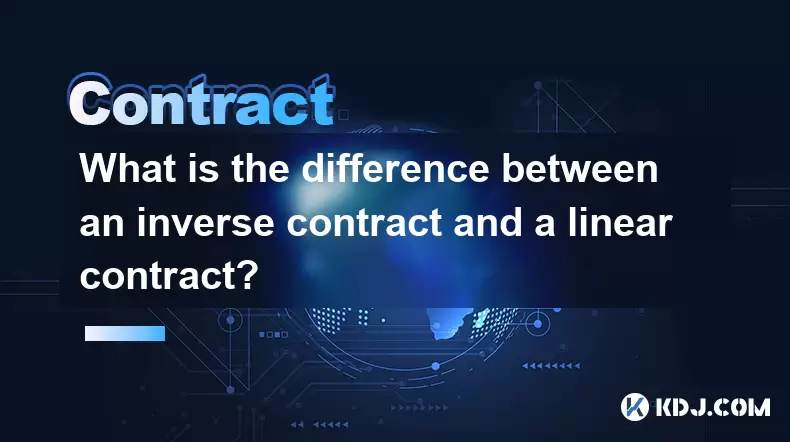-
 Bitcoin
Bitcoin $118,209.3536
1.16% -
 Ethereum
Ethereum $3,151.7546
5.98% -
 XRP
XRP $2.9277
2.35% -
 Tether USDt
Tether USDt $1.0000
0.00% -
 BNB
BNB $689.7099
1.26% -
 Solana
Solana $163.4270
1.91% -
 USDC
USDC $1.0000
0.02% -
 Dogecoin
Dogecoin $0.1983
3.74% -
 TRON
TRON $0.3008
0.51% -
 Cardano
Cardano $0.7435
2.86% -
 Hyperliquid
Hyperliquid $47.6547
-0.48% -
 Stellar
Stellar $0.4625
2.79% -
 Sui
Sui $3.9921
2.71% -
 Chainlink
Chainlink $16.0608
4.23% -
 Hedera
Hedera $0.2348
1.56% -
 Bitcoin Cash
Bitcoin Cash $496.6985
1.25% -
 Avalanche
Avalanche $21.9038
5.41% -
 UNUS SED LEO
UNUS SED LEO $8.8356
-1.88% -
 Shiba Inu
Shiba Inu $0.0...01364
5.31% -
 Toncoin
Toncoin $3.1102
4.35% -
 Litecoin
Litecoin $95.9756
3.59% -
 Polkadot
Polkadot $4.0925
5.78% -
 Monero
Monero $333.7622
-1.44% -
 Uniswap
Uniswap $9.1968
2.25% -
 Bitget Token
Bitget Token $4.6378
6.23% -
 Pepe
Pepe $0.0...01282
6.77% -
 Dai
Dai $1.0002
0.03% -
 Ethena USDe
Ethena USDe $1.0005
0.00% -
 Aave
Aave $329.9143
4.49% -
 Bittensor
Bittensor $441.4995
6.89%
What is the difference between an inverse contract and a linear contract?
Inverse contracts settle in cryptocurrency, while linear contracts use stablecoins or fiat for margin and settlement.
Jul 16, 2025 at 12:22 pm

Understanding Inverse Contracts
An inverse contract is a type of cryptocurrency futures contract where the settlement currency is the cryptocurrency itself, such as Bitcoin (BTC), rather than a stablecoin like USDT or USD. This means that when traders open positions in an inverse contract, their profit and loss (P&L) are calculated in BTC instead of fiat or stablecoins.
For example, if you're trading a BTC/USD inverse contract, your collateral must be in BTC. When you make a profit, you receive more BTC, and when you incur a loss, you lose BTC. This structure appeals to long-term holders of cryptocurrencies who prefer not to convert their holdings into fiat or stablecoins for trading purposes.
Inverse contracts are often used by traders who believe in the long-term value of a cryptocurrency and want to avoid exposure to fiat currencies during volatile market conditions.
Inverse contracts settle in crypto assets.
Understanding Linear Contracts
A linear contract, also known as a USDT-margined or USD-margined contract, uses a stablecoin or fiat currency—typically USDT or USD—as both the margin and settlement currency. This makes it easier for traders to calculate their profits and losses in familiar terms, especially for those new to derivatives trading.
In linear contracts, if you deposit USDT as collateral and trade a BTC/USDT contract, any gains or losses will be reflected in USDT. This eliminates the risk of losing the underlying asset due to volatility in its price, which is a concern in inverse contracts.
Traders who prioritize simplicity and clarity in their trading outcomes tend to favor linear contracts, particularly short-term traders or those who do not wish to hold large amounts of cryptocurrency directly.
Linear contracts use stablecoins or fiat for margin and settlement.
Margin Requirements and Collateral Differences
One of the most significant differences between inverse and linear contracts lies in how margin requirements and collateral are handled.
In inverse contracts, the required margin is denominated in the base cryptocurrency. For instance, if you're trading a BTC/USD inverse contract, you must have BTC in your account to open a position. The amount of BTC needed depends on the leverage and size of the position.
Conversely, linear contracts allow traders to use stablecoins like USDT or USD as collateral. This offers greater flexibility for traders who may not want to lock up their crypto assets or who want to avoid the volatility associated with holding crypto as margin.
This distinction has implications for risk management and capital allocation strategies, especially in highly volatile markets.
- Traders using inverse contracts must monitor crypto prices closely to avoid liquidation.
- Those using linear contracts can better predict their margin needs since they are denominated in stablecoins.
Profit and Loss Calculation Mechanism
The calculation of profit and loss differs significantly between inverse and linear contracts.
In inverse contracts, P&L is calculated in the cryptocurrency being traded. If you go long on BTC in an inverse contract and the price rises, your profit is paid out in BTC. However, if the price drops, you lose BTC. This dynamic can amplify losses during bearish trends because you’re effectively paying for losses in the same asset that's declining in value.
In contrast, linear contracts calculate P&L in stablecoins or fiat. This allows traders to clearly see how much money they've gained or lost without worrying about further depreciation of the asset they're trading. It provides more stability in accounting for returns and managing risk.
- Inverse contracts: P&L in crypto
- Linear contracts: P&L in stablecoin/fiat
This difference affects how traders approach hedging, position sizing, and overall strategy execution.
Liquidation Risk and Volatility Exposure
When considering liquidation risk, inverse contracts tend to expose traders to higher volatility-related dangers compared to linear contracts.
Because inverse contracts require traders to post crypto as margin, any drop in the value of that crypto can lead to faster liquidation. For example, if you're holding a leveraged long position in BTC using BTC as margin, and BTC’s price falls sharply, both your collateral and the value of your position decline simultaneously. This dual impact increases the likelihood of liquidation.
On the other hand, linear contracts mitigate this risk by using stablecoins as margin. Even if the price of BTC drops significantly, the margin remains unaffected because it's denominated in a stable currency. As a result, liquidation levels are based purely on the movement of the asset price, not on the depreciation of the collateral itself.
- Inverse contracts face double risk from price drops.
- Linear contracts offer more predictable liquidation thresholds.
Use Cases and Ideal Traders for Each Contract Type
Different types of traders benefit more from one contract type over the other depending on their investment goals, risk tolerance, and market outlook.
Inverse contracts are typically favored by:
- Long-term crypto holders who don't want to sell their assets.
- Traders comfortable with crypto volatility and willing to take on margin risk.
- Investors looking to accumulate more crypto through successful trades.
Linear contracts are ideal for:
- Short-term traders focused on quick gains.
- Newcomers who prefer simplicity and stable reference points.
- Individuals who want to avoid exposure to crypto price fluctuations in their margin.
Each contract type serves a unique role in a trader’s portfolio, and understanding these roles helps in selecting the appropriate tool for different trading scenarios.
Inverse contracts suit long-term holders; linear contracts suit short-term traders.
Frequently Asked Questions
1. Can I switch between inverse and linear contracts on the same trading platform?
Yes, many major cryptocurrency exchanges, including Binance, Bybit, and OKX, offer both inverse and linear perpetual contracts. Users can choose which type to trade based on their preference and strategy.
2. Are fees different between inverse and linear contracts?
Fees are generally similar for both contract types on most platforms. However, funding rates can differ due to variations in market depth and demand for each contract type.
3. Is one contract type riskier than the other?
Inverse contracts carry additional risks related to the depreciation of the margin asset. If the price of the underlying crypto falls, the margin value declines, increasing liquidation chances. Linear contracts avoid this issue by using stablecoins as margin.
4. How does leverage work differently in inverse and linear contracts?
Leverage mechanics are similar in both contract types. However, in inverse contracts, the effective leverage can increase unexpectedly if the price of the collateral asset drops, leading to higher liquidation risks.
Disclaimer:info@kdj.com
The information provided is not trading advice. kdj.com does not assume any responsibility for any investments made based on the information provided in this article. Cryptocurrencies are highly volatile and it is highly recommended that you invest with caution after thorough research!
If you believe that the content used on this website infringes your copyright, please contact us immediately (info@kdj.com) and we will delete it promptly.
- Eclipse Airdrop and Token Supply: Navigating the Crypto Landscape
- 2025-07-16 18:50:13
- Solana Price, Zebec Network, and Remittix: Decoding the Crypto Signals
- 2025-07-16 18:30:13
- Crypto Picks & Altcoin Breakout: August's Hottest Trends
- 2025-07-16 18:30:13
- XLM Stellar Analyst Prediction: Is a $10 Target on the Horizon?
- 2025-07-16 19:10:12
- Dubai, Ripple, and Tokenization: A New Era for Real Estate
- 2025-07-16 18:50:13
- Unilabs Finance (UNIL): Primed for a Massive 2025 Launch?
- 2025-07-16 19:15:12
Related knowledge

What is a stablecoin-margined contract vs a coin-margined contract?
Jul 15,2025 at 06:36pm
Understanding the Difference Between Stablecoin-Margined Contracts and Coin-Margined ContractsIn the world of cryptocurrency derivatives, margin plays...

How to backtest a Bitcoin futures trading strategy?
Jul 15,2025 at 11:35am
Understanding Bitcoin Futures TradingBitcoin futures trading involves contracts to buy or sell Bitcoin at a predetermined price and date in the future...

Psychology of trading Bitcoin contracts
Jul 13,2025 at 02:50am
Understanding the Emotional Rollercoaster of Bitcoin Futures TradingBitcoin contract trading, especially in the form of futures, introduces a high lev...

Can the Lightning Network be used for smart contracts?
Jul 14,2025 at 11:28pm
Understanding the Lightning Network's Core FunctionalityThe Lightning Network is a second-layer solution built on top of blockchain protocols like Bit...

How does macroeconomic news affect Bitcoin futures prices?
Jul 15,2025 at 04:56pm
Understanding the Relationship Between Macroeconomic News and Bitcoin FuturesBitcoin futures are derivative contracts that allow traders to speculate ...

Best time of day to trade Bitcoin contracts?
Jul 13,2025 at 05:29am
Understanding Bitcoin Contracts and Their VolatilityBitcoin contracts, particularly futures contracts, are derivative instruments that allow traders t...

What is a stablecoin-margined contract vs a coin-margined contract?
Jul 15,2025 at 06:36pm
Understanding the Difference Between Stablecoin-Margined Contracts and Coin-Margined ContractsIn the world of cryptocurrency derivatives, margin plays...

How to backtest a Bitcoin futures trading strategy?
Jul 15,2025 at 11:35am
Understanding Bitcoin Futures TradingBitcoin futures trading involves contracts to buy or sell Bitcoin at a predetermined price and date in the future...

Psychology of trading Bitcoin contracts
Jul 13,2025 at 02:50am
Understanding the Emotional Rollercoaster of Bitcoin Futures TradingBitcoin contract trading, especially in the form of futures, introduces a high lev...

Can the Lightning Network be used for smart contracts?
Jul 14,2025 at 11:28pm
Understanding the Lightning Network's Core FunctionalityThe Lightning Network is a second-layer solution built on top of blockchain protocols like Bit...

How does macroeconomic news affect Bitcoin futures prices?
Jul 15,2025 at 04:56pm
Understanding the Relationship Between Macroeconomic News and Bitcoin FuturesBitcoin futures are derivative contracts that allow traders to speculate ...

Best time of day to trade Bitcoin contracts?
Jul 13,2025 at 05:29am
Understanding Bitcoin Contracts and Their VolatilityBitcoin contracts, particularly futures contracts, are derivative instruments that allow traders t...
See all articles

























































































